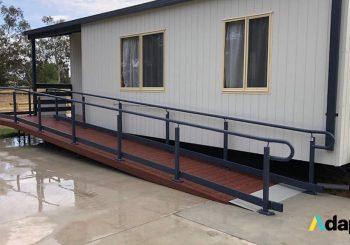When it comes to residential wheelchair ramps, there are a number of different options to take into consideration.
The market is chock-a-block with a variety of ramps ranging from permanent, temporary to telescopic and portable etc. This wide choice can be a little overwhelming, making it difficult to decide which wheelchair ramp will suit your specific needs.
Today, you can find disability ramps made from materials as varied as concrete, wood, iron, alumninium, steel etc. Choosing the right ramp is about making sure that you take various things into account. If you go about the process in a methodical manner, you are sure to find a ramp that suits your needs and fits your budget. Here we discuss some of the things you should keep in view while choosing wheelchair ramps to install:
Aspects to consider
#1 Determine Why You Require A Ramp
While this might seem quite obvious, in order to decide which ramp will work best for you, its important to determine why you need the feature in the first place. Is it because you are permanently wheelchair-ridden or do you need a ramp because you arent able to lift your feet above a specific height? The answers to these questions will help you determine the style and size of the ramp to choose and whether you’d need more than one ramp in your home.
#2 Type of Ramp
- If you are able to move around comfortably, but find it challenging to get over a few steps at the entrance of your home, a smaller, more temporary feature might be a suitable choice. These are referred to as entry ramps and you can use them to get over a small flight of steps, a landing or even over a threshold
- But if you need a ramp to navigate anything that’s higher than 6 to 8 inches, you’d need a suitcase ramp. This feature is able to rise higher and extend further than a standard entry ramp. It provides a very gentle slope for much taller obstacles such as four to six stairs.
- When you are considering the type of ramp you need, the other factor to take into account is whether you want a portable or permanent ramp. If you need to navigate a larger number of steps or the height is greater than 12 inches, you might want to consider a more permanent feature.
- If you need to carry the ramp with you to some other location, a portable ramp might be a better solution for you.
#3 Size Of The Ramp
This is the other aspect you need to take into account. You will find there are a large number or ramp sizes to choose from. Depending on DDA requirements, your height and accessibility requirements, you might have to choose either a smaller or bigger ramp.
The weight capacity is another factor you need to consider. The ramp needs to be strong and sturdy enough to handle your body weight plus the weight of the wheelchair. If you are using an electric wheelchair, you’d need a ramp with a higher weight capacity.
Opt For The Best Wheelchair Ramps
Choosing the right wheelchair ramp is about making sure the feature you pick works well for your needs and that its safe, strong and durable. We make this choice easier for you and all you have to do is discuss your requirements with our experts.
They will provide you all the information you need about the different types of ramps and what their specifications are. We provide a wide variety of ramp layouts and options. You can call 1800 232 782 or contact Adapta through this form and one of our representatives will contact you shortly.
Thanks for reading,
Adapta Ramps
1800 Adapta (1800 232 782)



